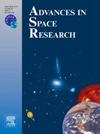Investigating the effects of different data classification methods on landslide susceptibility mapping
IF 2.8
3区 地球科学
Q2 ASTRONOMY & ASTROPHYSICS
引用次数: 0
Abstract
In this study, landslide susceptibility maps (LSMs) were produced for three regions where landslides are common in the Eastern Black Sea Region of Türkiye. The regions studied include the districts of Trabzon, Rize and Artvin. The eXtreme Gradient Boosting (XGBoost) machine learning algorithm was used to generate the LSMs. Ten different factors that can affect landslides including lithology, land cover, topographic wetness index (TWI), plan and profile curvature, slope, elevation, aspect, distance to roads and drainages were used for the research. The study tested various spatial data classification methods for these factors. Specifically, the data was categorized using five distinct classification methods: “geometric interval,” “equal interval,” “manual interval,” “natural breaks,” and “quantile.” The main objective of the study was to see how these classification methods affect the accuracy of LSMs. For this purpose, six different models using the XGBoost algorithm were created. In the first model, continuous data was used for most of the factors, while some factors (aspect, land cover and lithology) were used as discrete data. The other five models categorized the data using the different classification methods mentioned above. The receiver operating characteristic (ROC) curve and area under the curve (AUC) approach were used to measure how well each model performed. The results showed that the Model_1 using mostly continuous data performed the best among all three study areas with the highest AUC value. The model with the lowest AUC value was the model using the equal interval classification method (Model_3). The most important finding gained from this study was that when producing LSMs, it is preferable to maintain continuous data as is rather than reclassifying it, as this improves the accuracy of the susceptibility model.
探讨不同数据分类方法对滑坡易感性填图的影响
在这项研究中,滑坡易感性地图(LSMs)制作了三个地区,其中滑坡是常见的东黑海地区的 rkiye。研究的地区包括特拉布宗、里泽和阿尔文地区。使用极限梯度增强(XGBoost)机器学习算法生成lsm。影响滑坡的10个不同因素包括岩性、土地覆盖、地形湿度指数(TWI)、平面和剖面曲率、坡度、高程、坡向、与道路的距离和排水系统。本研究对这些因素的不同空间数据分类方法进行了检验。具体来说,使用五种不同的分类方法对数据进行分类:“几何间隔”、“相等间隔”、“人工间隔”、“自然间隔”和“分位数”。本研究的主要目的是了解这些分类方法如何影响lsm的准确性。为此,使用XGBoost算法创建了六个不同的模型。在第一个模型中,大部分因子使用连续数据,而一些因子(坡向、土地覆盖和岩性)使用离散数据。其他五个模型使用上述不同的分类方法对数据进行分类。采用受试者工作特征(ROC)曲线和曲线下面积(AUC)方法来衡量每个模型的表现。结果表明,在AUC值最高的3个研究区域中,使用大部分连续数据的Model_1表现最好。AUC值最低的模型是采用等区间分类方法的模型(Model_3)。从这项研究中获得的最重要的发现是,当产生lsm时,最好保持连续的数据,而不是重新分类,因为这提高了敏感性模型的准确性。
本文章由计算机程序翻译,如有差异,请以英文原文为准。
求助全文
约1分钟内获得全文
求助全文
来源期刊

Advances in Space Research
地学天文-地球科学综合
CiteScore
5.20
自引率
11.50%
发文量
800
审稿时长
5.8 months
期刊介绍:
The COSPAR publication Advances in Space Research (ASR) is an open journal covering all areas of space research including: space studies of the Earth''s surface, meteorology, climate, the Earth-Moon system, planets and small bodies of the solar system, upper atmospheres, ionospheres and magnetospheres of the Earth and planets including reference atmospheres, space plasmas in the solar system, astrophysics from space, materials sciences in space, fundamental physics in space, space debris, space weather, Earth observations of space phenomena, etc.
NB: Please note that manuscripts related to life sciences as related to space are no more accepted for submission to Advances in Space Research. Such manuscripts should now be submitted to the new COSPAR Journal Life Sciences in Space Research (LSSR).
All submissions are reviewed by two scientists in the field. COSPAR is an interdisciplinary scientific organization concerned with the progress of space research on an international scale. Operating under the rules of ICSU, COSPAR ignores political considerations and considers all questions solely from the scientific viewpoint.
 求助内容:
求助内容: 应助结果提醒方式:
应助结果提醒方式:


